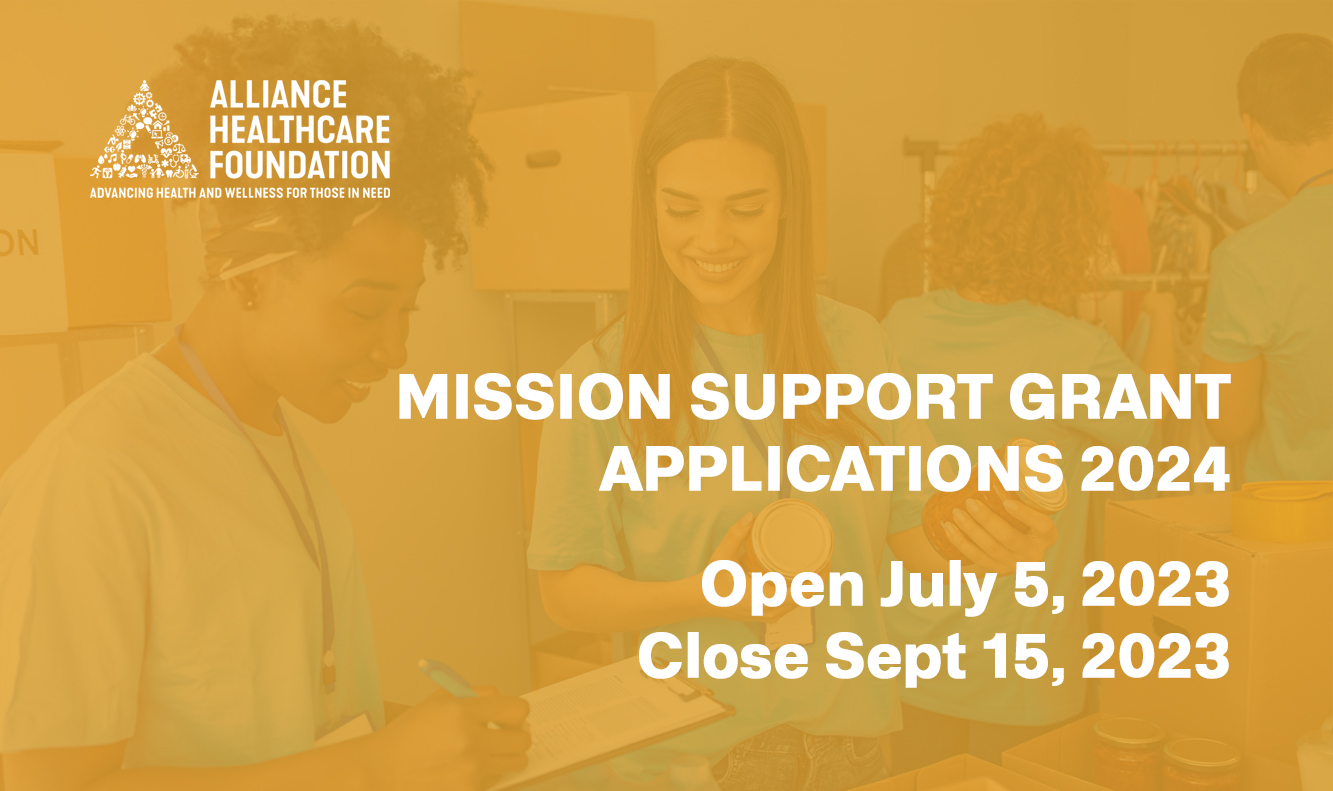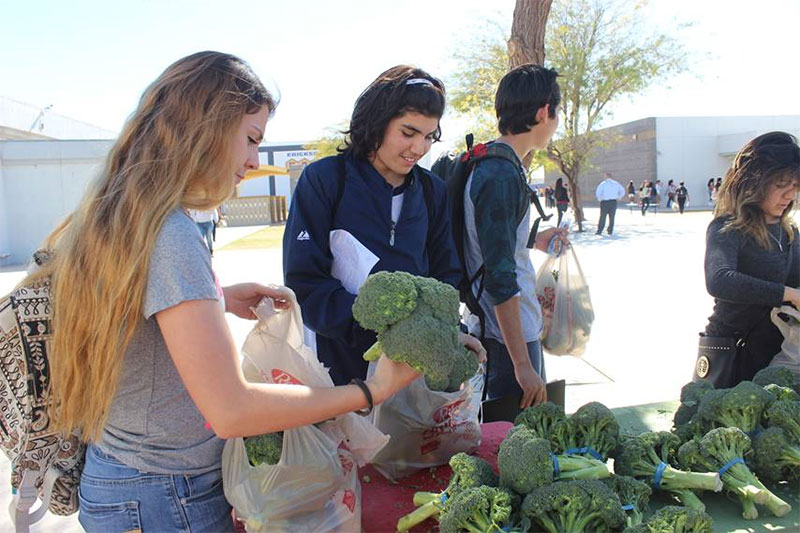September 26, 2017
Having just written about obesity fueling the epidemic of prediabetes and diabetes across California in last month’s blog post, it might seem incongruous to switch gears and now talk about the very real problem of people in our region not having enough nutritious food to eat. Sadly, the problems are actually interconnected.
September is Hunger Awareness Month, and in this month’s blog post, we’re going to take a closer look at what hunger looks like in San Diego and Imperial Counties in 2017 and see what is being done to ensure that everyone in our community has enough nutritious, affordable food to eat every day.
Hunger vs. Food Insecurity
September is known as Hunger Awareness Month because “hunger” is a term that everyone understands, but it’s not actually the preferred term for organizations who work to make sure people have enough food to eat. Hunger is a physiological sensation that all of us have experienced at one time or another regardless of our socioeconomic status or how much food we have available to us. Anybody can be hungry. You might be hungry right now as you read this blog, but chances are you’re not worried about where your next meal will come from or whether you’ll be able to afford groceries. That’s not the case for people who suffer from “food insecurity.”
The United States Department of Agriculture (USDA) defines food insecurity as “a household-level economic and social condition of limited or uncertain access to adequate food.” In other words, food insecure people might have food for today and tomorrow, but they might not be sure where their next meal will come from after that. Think of food insecurity as chronic or recurring hunger where there isn’t a long-term solution in sight for eliminating that insecurity.
How big of a problem is food insecurity in Imperial and San Diego counties? It’s bigger than you might think. According to the latest research from the San Diego Hunger Coalition, over half a million San Diegans–1 in 6 residents–are considered to be food insecure. Rates in Imperial County are even higher with 17% of the general population being food insecure. Most alarming is that the rate of food insecurity among children in Imperial County is the highest in California, with almost 40% of children not getting enough food to eat. The numbers in Imperial County seem especially cruel and inexplicable since Imperial County is one of the most productive agricultural regions in entire country. What is going on?
Quality vs. Quantity
The obvious explanation for why some people are food insecure is an economic one: food costs money and some people simply do not make enough money to buy adequate amounts of healthy, nutritious food to feed themselves and their families. The emphasis on “healthy, nutritious food” is an important one, too. Some people may make enough money to keep themselves and their family from feeling hungry most of the time, but that doesn’t mean they’re getting all the nutrients they need from the food they’re eating. Rich, calorie-dense carbohydrates are some of the least expensive foods people can buy–think of the multi-packs of ramen noodles that can be purchased for only a few dollars–but such foods are a woefully inadequate source of nutrition. We can load up on this kind of food to feel full, but we’re not getting the nutrients we need when we do. This is one of the reasons why many obese people are actually malnourished.
Even if people want to be eating healthier foods, it doesn’t mean they have access to such foods. These people are sometimes said to live in “food swamps” or “food deserts,” which the Centers for Disease Control and Prevention defines as “areas that lack access to affordable fruits, vegetables, whole grains, low-fat milk, and other foods that make up a full and healthy diet.” It might not be realistic for someone with a limited income or few transportation options to spend the time and money necessary to travel long distances to round up healthy, nutritious fruits, vegetables, and whole grains. If the corner market is the only convenient location where you can get food, you’re going to be limited to the food choices available at such stores, which usually have limited amounts of healthy fruits and vegetables, if any.
What Can Be Done
Eliminating food insecurity in our communities is not an easy problem to solve, but there is still much that can be done. At a macro level, organizations such as ReFED are working hard to put systems in place that to help reduce food waste in our country. The United States spends a staggering $218 billion dollars–1.3% of our Gross Domestic Product (GDP)–growing, processing, and disposing of food that is never eaten. It’s easy to see how much more healthy, nutritious food would be available to people if we could reduce even a small amount of the food waste in this country. ReFed has a roadmap for how we can realistically reduce food waste by 20% within the next decade, but a coordinated effort between farmers, food processors, restaurants, and other groups is required.
At the local level, we can support grantees such as Olivewood Gardens and Learning Center and Project New Village who are growing and distributing fresh fruits and vegetables in San Diego communities where fresh produce has traditionally been hard to come by. The UC San Diego School of Medicine Center for Community Health is using one of our responsive grants to help put healthy food options into corner markets throughout the community. Grantees such as the Imperial Valley Food Bank and the San Diego Hunger Coalition are doing the critical work of distributing healthy, nutritious food directly to families and individuals struggling with food insecurity.
If you’re interested in helping to eliminate food insecurity in our region, supporting organizations like the ones listed above is a great place to start. There is tremendous work being done to make sure that everyone in San Diego and Imperial Counties has enough healthy, nutritious food to eat to live active, productive lives.
Contact Us
What efforts are you seeing in your community to reduce food insecurity? What kinds of approaches seem to be working the best? Let us know!
Interested in knowing more about our grantees working on health issues such as food insecurity? Leave us a comment on Facebook or send us a tweet @AllianceHF to continue the conversation. We’d love to hear your thoughts, answer your questions, or provide resources as needed.
– Nancy Sasaki, Executive Director
Alliance Healthcare Foundation
NSasaki@AllianceHF.org
Related News

Jul 5, 2023
2024 Mission Support-open
Open Request for Grant Applications: 2024 Mission Support APPLY HERE [...]

Oct 22, 2021
National Domestic Violence Awareness Month – October
Addressing Domestic Violence in the Refugee/Immigrant Community According to the [...]
Oct 18, 2017
AHF in the Community – September Recap
From Nancy Sasaki, Executive Director – There was a lot [...]


